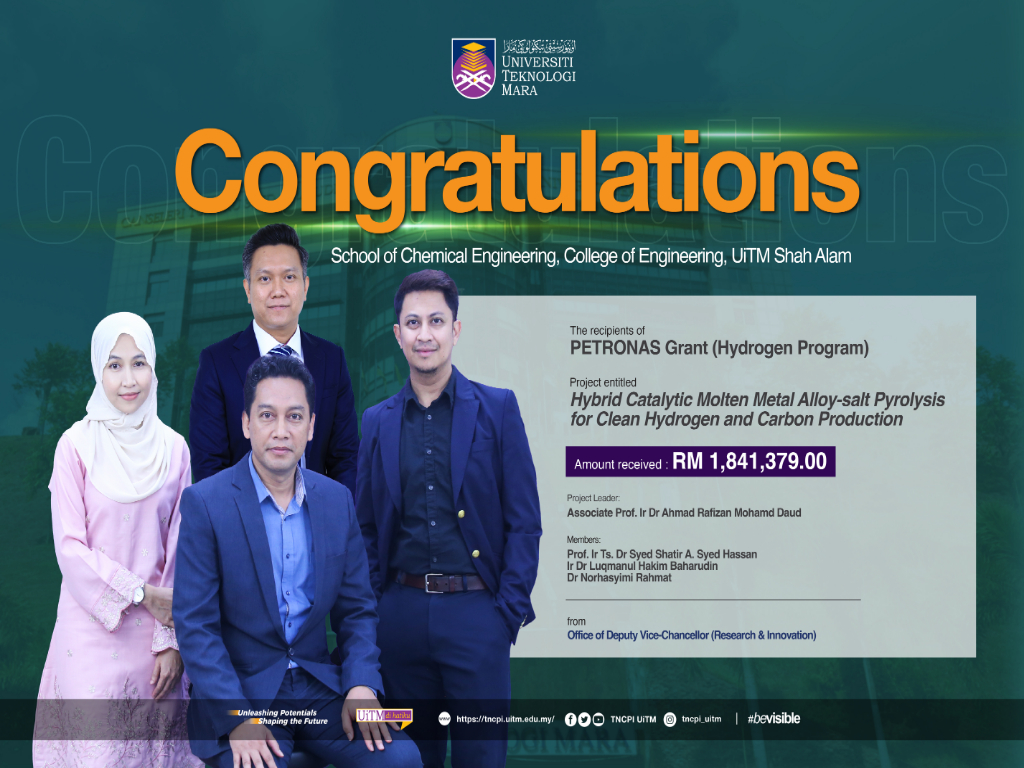
Hydrogen, the simplest and most abundant element on earth, has been touted as a fuel for the future considering that hydrogen combustion is clean, generating only water. There are several varieties of hydrogen on the hydrogen color spectrum classified according to source, production technology, and CO2 emission level. Turquoise hydrogen is produced by splitting natural gas or methane into hydrogen and solid carbon in a high-temperature process called pyrolysis. This technology competes with blue hydrogen (steam methane reforming with CO2 capture) and green hydrogen (water electrolysis) technologies.
If a state of net-zero CO2 emission or carbon neutrality is to be realized, 200 Mt of hydrogen is needed by 2050, a marked increase from the current production level of 90 Mt. In response, researchers from the School of Chemical Engineering, College of Engineering, Universiti Teknologi MARA, in collaboration with PETRONAS Research Sdn Bhd (PRSB), are looking into exploiting our methane resources for hydrogen production using pyrolysis technology.
In this 18-month project funded by PRSB, methane bubbles will be cleanly converted into hydrogen and saleable solid carbon in a single-step process under the temperature effect of a hybrid molten metal-salt media. The gas-phase splitting process is thought to proceed via a stepwise dehydrogenation process producing reactive intermediates leading to solid carbon and hydrogen formation. The research team will attempt to develop and test the technology at a pilot scale (technology readiness level, TRL 4). To further assess the technology’s feasibility, a techno-economic evaluation will also be conducted.
As evident from the process stoichiometry, the technology emits negligible CO2 and is also energy-efficient, requiring a minimum energy demand of ∆Hr = 37 kJ/mole H2 compared to water electrolysis (286 kJ/mole) and steam reforming (63 kJ/mole). Together, methane pyrolysis is a promising and scalable technology option to produce low-carbon hydrogen from Malaysian methane and natural gas reserves.
Congratulations, UiTM researchers!
